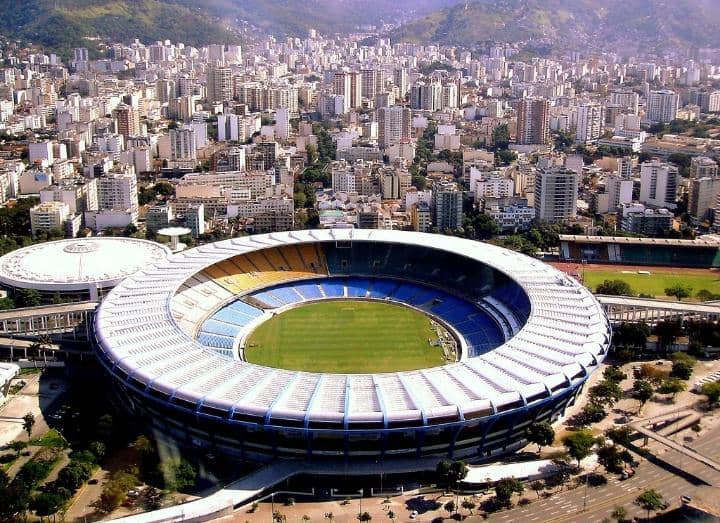Maracanã Stadium, officially known as Estádio Jornalista Mário Filho, is a historic sports venue in Rio de Janeiro, Brazil. Inaugurated on June 16, 1950, it was built to host the FIFA World Cup that year. Originally designed to accommodate 200,000 spectators, it became the largest stadium globally at its opening.
The stadium’s name honors journalist Mário Filho, who advocated for its construction, while “Maracanã” derives from the nearby river, meaning “like a rattle” in Tupi.
The stadium is renowned for its rich history and cultural significance in Brazilian soccer. It hosted the infamous “Maracanazo” match during the 1950 World Cup final, where Brazil lost to Uruguay in front of an estimated 200,000 fans.
This loss has left an indelible mark on Brazilian sports culture and is often referenced in discussions about national pride and identity.
Over the decades, Maracanã has undergone several renovations to maintain safety and modernize facilities. Significant updates occurred in 1999 and 2005, reducing capacity to around 103,000 and later to approximately 82,238 seats.
These renovations allowed it to host major events, including the 2014 FIFA World Cup and the 2016 Summer Olympics.
Apart from soccer, Maracanã has served as a venue for various events, including concerts and religious gatherings. It is home to two of Brazil’s most popular football clubs: Flamengo and Fluminense.
Matches between these teams are highly anticipated events known as “Fla-Flu,” showcasing the stadium’s role as a cultural hub.
Today, Maracanã Stadium remains a symbol of Brazilian football passion and history. Visitors can explore its museum, which features memorabilia from legendary players like Pelé and Zico.
The stadium continues to attract tourists and sports enthusiasts alike, solidifying its status as an iconic landmark in Rio de Janeiro.

